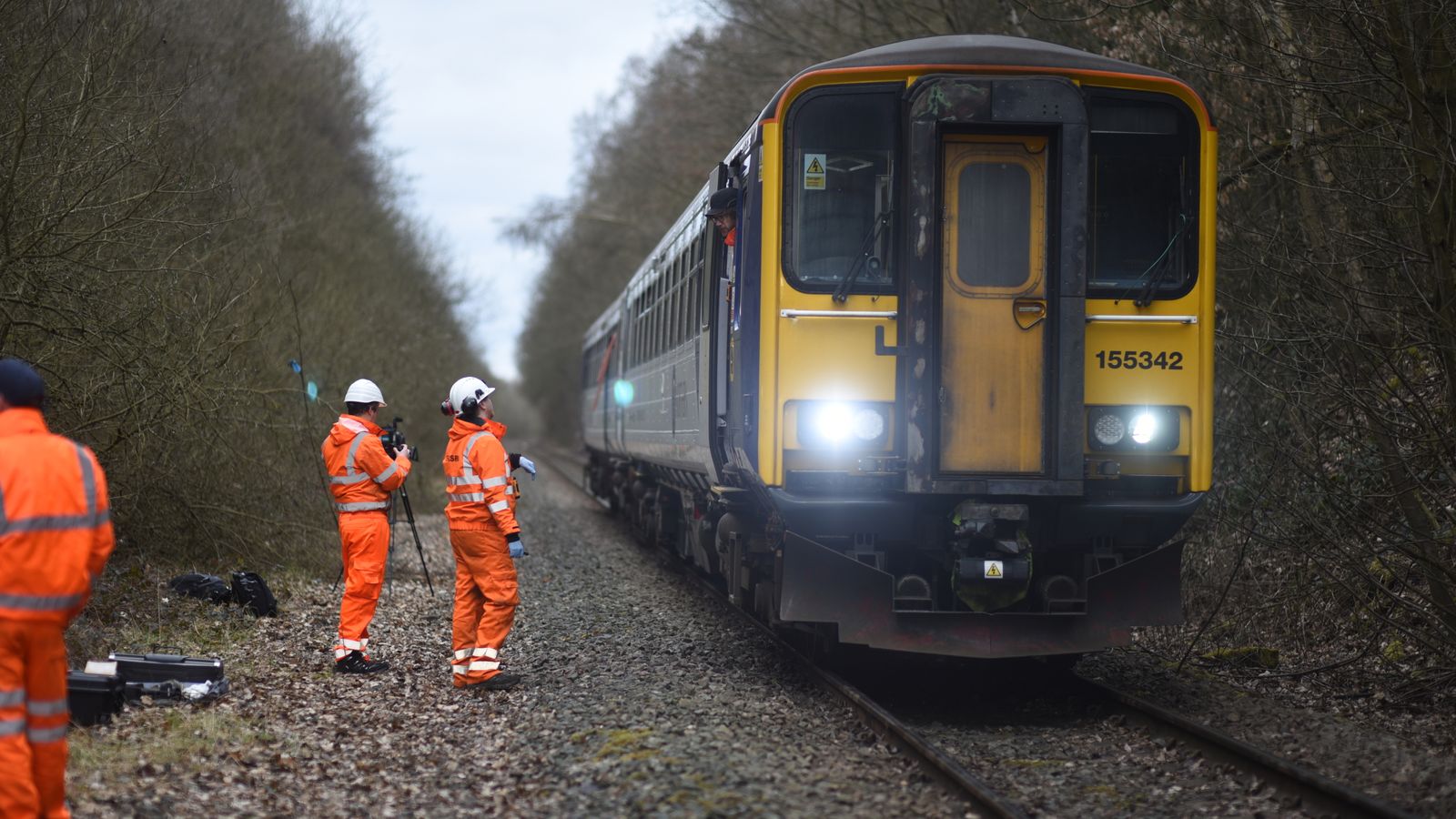Dry ice is to be blasted onto railway lines across northern England in a bid to reduce delays caused by leaves on the track.
The new technique, developed by engineers at the University of Sheffield, will see pellets fired in a stream of air from a passenger train onto rails, freezing the leaves and making them brittle.
The dry ice then turns back into gas, causing it to expand and destroy the leaves.
The technique will be trialled by operator Northern on a passenger train in the coming weeks.
Ten million trees line Britain’s railway system with thousands of tonnes of leaves falling on the line every autumn.
At the moment they are cleared by 61 special trains which deploy high-pressure water jets, followed by a gel containing sand and steel grains to help with braking.
The engineers behind the dry ice system claim their method is significantly more efficient as it can be used by passenger trains which cover greater distances than the fleets of cleaning trains.
Fuel crisis: Military begins deliveries to petrol stations as driver shortage continues
Serving Metropolitan Police officer charged with rape
COVID news latest: New Zealand drops elimination plan – as UK’s travel rules change
Professor Roger Lewis, who is leading the development of the new method, said: “This technology will make a step change in train performance during autumn, improving safety.
“It will provide more predictable braking and traction than current technology, and will help to improve train performance, reduce delays, increase passenger satisfaction and support the use of new technologies to enable greater network utilisation of the UK’s railways.
“It will be great for passengers, but also for all the train operators and Network Rail as well. It will make their lives much easier.”
When leaves fall on the track the effect is similar to black ice on roads, as they create a slippery layer which can lead to delays as trains must run slow and brake earlier.
Autumn-related issues cost the railway industry approximately £345 million each year.
Rob Cummings, seasonal improvement manager at Northern, said: “We’re very excited to test this new technology during the autumn period.
“One of the biggest risks to our performance during October and November is leaves on the line, but by helping to develop new technology we aim to deliver the very best service for our passengers.”






















